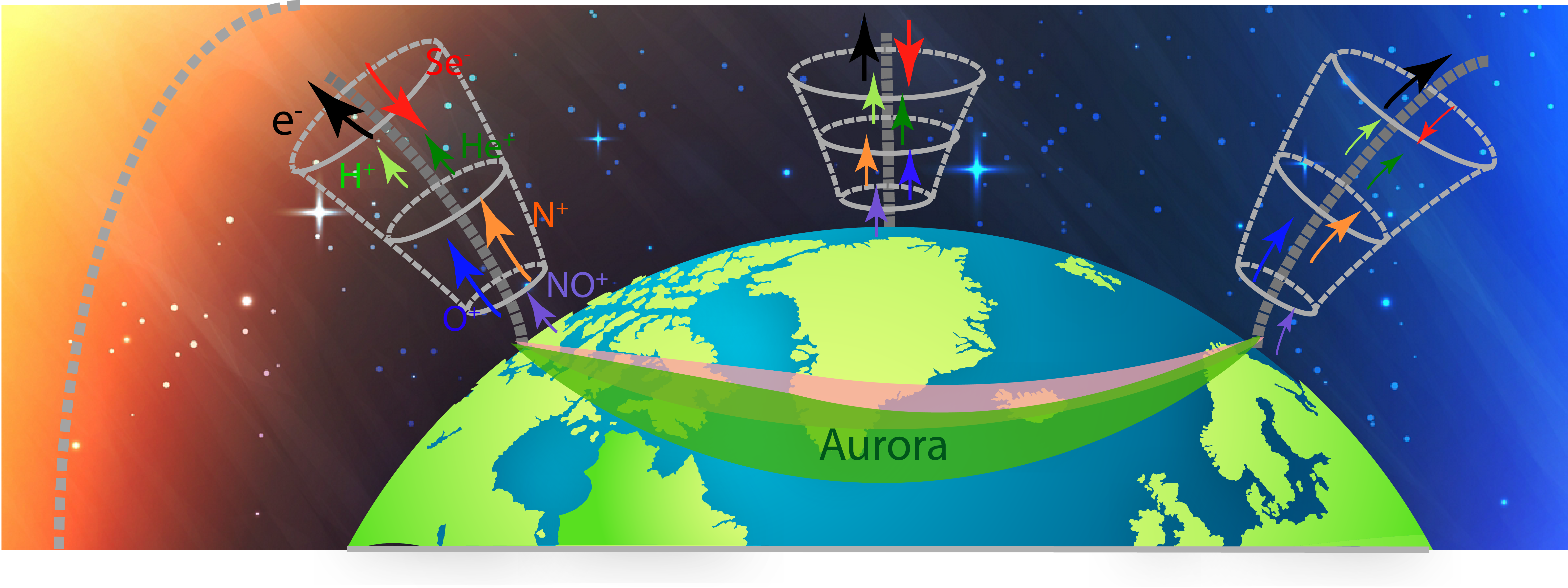The Contribution of N+ Ions to Earth’s Polar Wind
Published in Geophysics Research Letter, 2020
The escape of heavy ions from the Earth atmosphere is a consequence of energization and transport mechanisms, including photoionization, electron precipitation, ion‐electron‐neutral chemistry, and collisions. Numerous studies considered the outflow of O+ ions only, but ignored the observational record of outflowing N+. In spite of 12% mass difference, N+ and O+ ions have different ionization potentials, ionospheric chemistry, and scale heights. We expanded the Polar Wind Outflow Model (PWOM) to include N+ and key molecular ions in the polar wind. We refer to this model expansion as the Seven Ion Polar Wind Outflow Model (7iPWOM), which involves expanded schemes for suprathermal electron production and ion‐electron‐neutral chemistry and collisions. Numerical experiments, designed to probe the influence of season, as well as that of solar conditions, suggest that N+ is a significant ion species in the polar ionosphere and its presence largely improves the polar wind solution, as compared to observations.
Download the presentation slide here
Recommended citation: Lin, M.‐Y., Ilie, R., & Glocer, A. (2020). The contribution of N+ ions to Earth’s polar wind. Geophysical Research Letters, 47, e2020GL089321. https://doi.org/10.1029/2020GL089321

